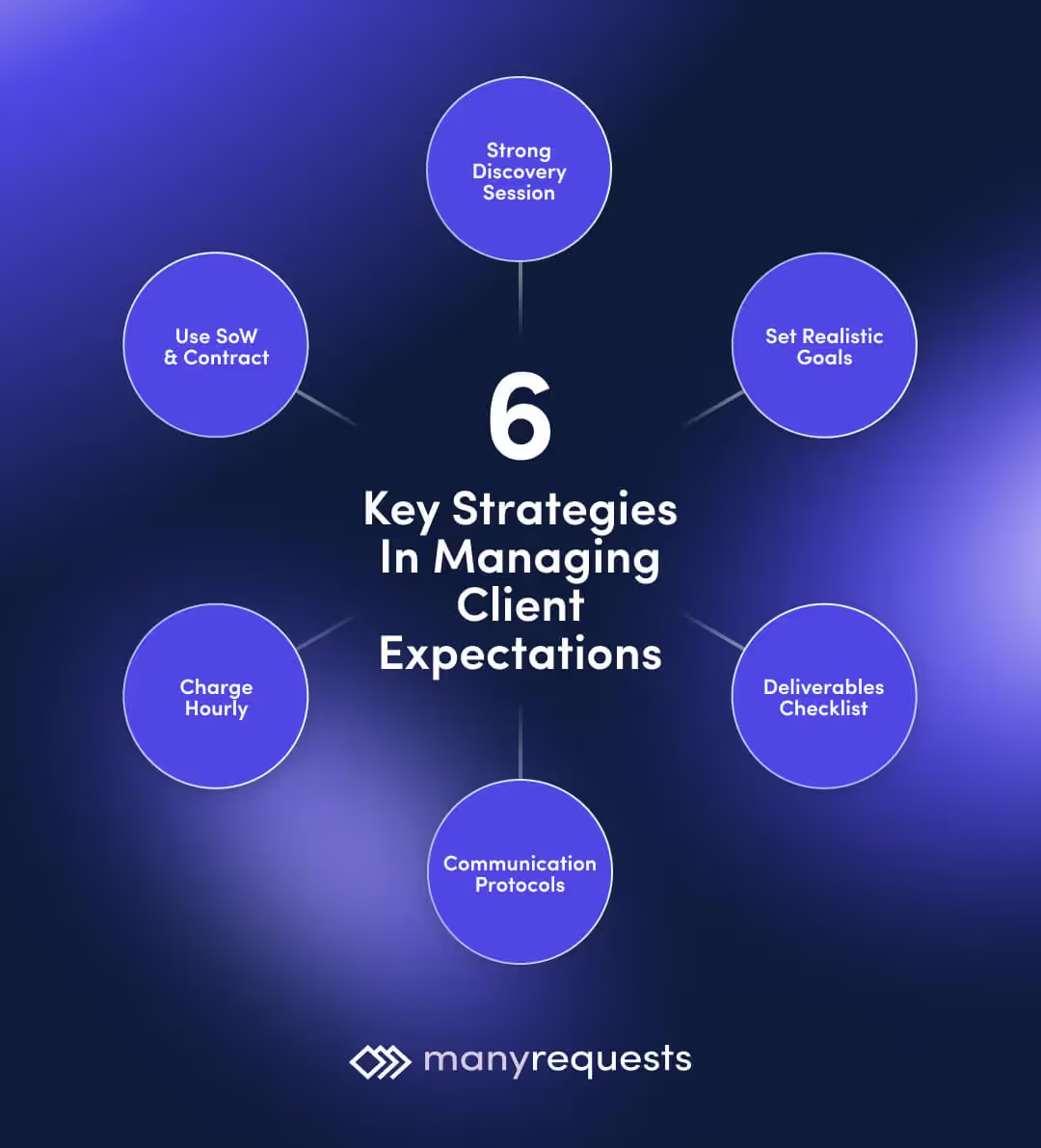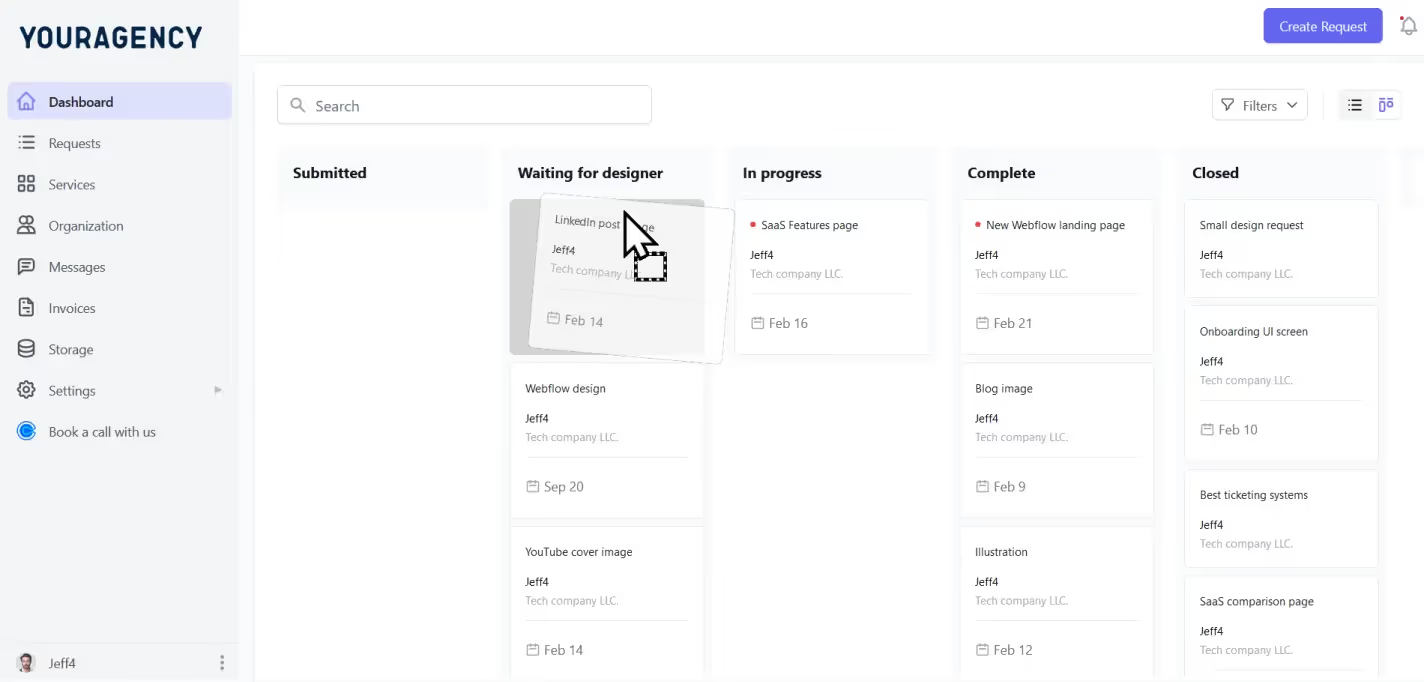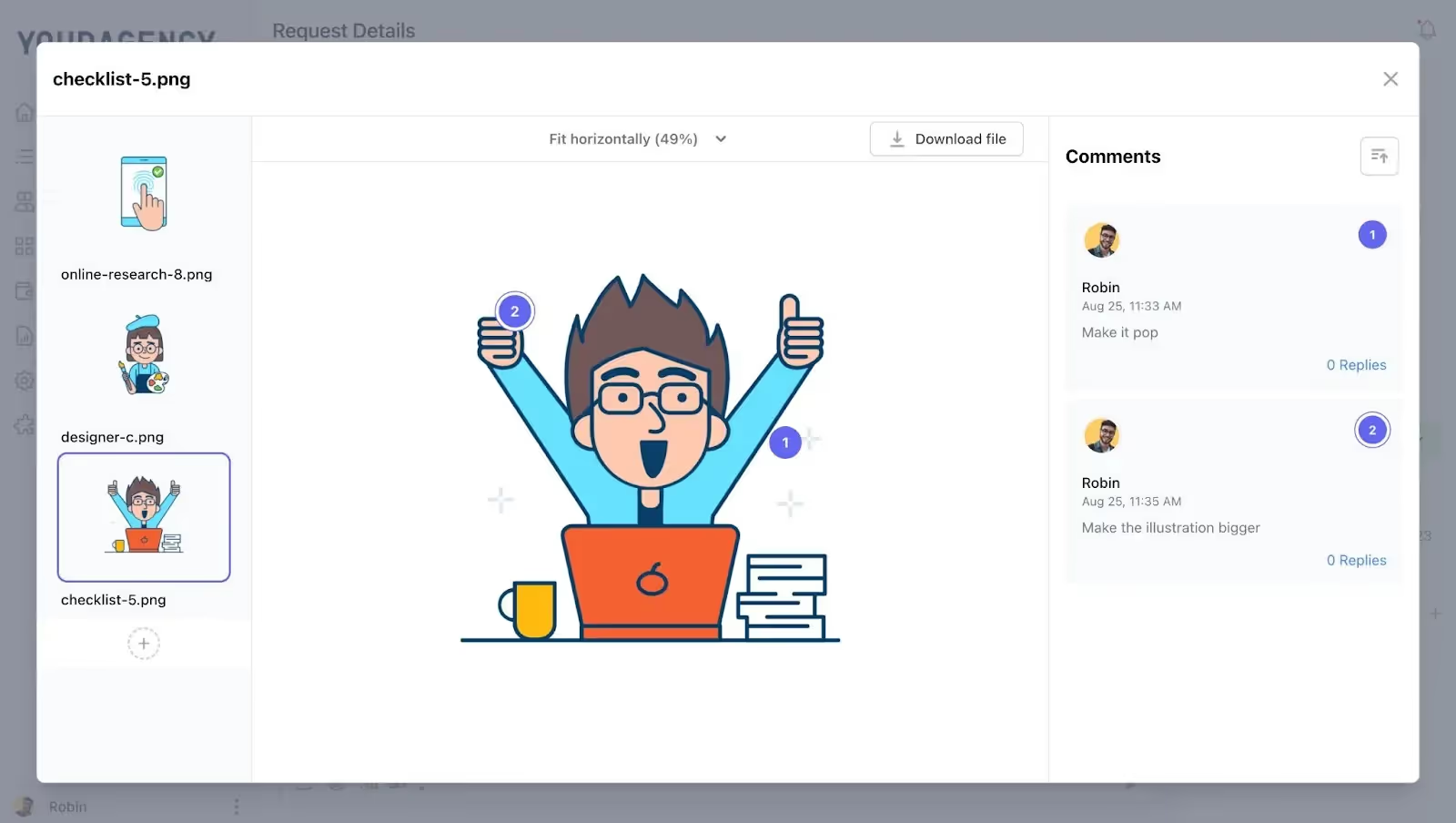6 Effective Strategies in Managing Client Expectations
Learn 6 proven strategies for managing client expectations to boost your agency's profitability, prevent scope creep, and build lasting client relationships.




You start losing clients the moment you say “yes” to all their unrealistic demands.
Sadly, not managing client expectations is a rookie mistake that sets up most agencies for failure. You overpromise without due diligence because you're terrified of disappointing clients and losing potential long-term business.
As a result, you deal with demanding clients expecting 2-3x the services they pay for–a case of mismatched expectations that hold your agency back from scaling.
It takes experience to learn the fine art of setting boundaries–and you’re not the only one struggling. One survey involving 100+ digital marketing professionals revealed that 41.1% struggle with client expectations. Meanwhile, Hubspot’s Marketing Agency Growth Report also showed that managing client expectations is one of the major pain points for 23% of agencies.
Fortunately, you don’t have to put yourself (or your agency) through the wringer just to learn how to set your client’s expectations. This guide will provide the tools and strategies to set boundaries, clearly define your services, and keep projects on track.
By the end of this article, you’ll learn how to communicate proactively, protect your agency’s time, and grow sustainably without the constant stress of managing ever-changing client expectations.
Key Takeaways:
Managing client expectations means setting clear, realistic boundaries and communicating the scope, deliverables, timelines, and responsibilities right from the start. It’s about being proactive in guiding clients through each phase of a project, addressing any potential concerns early, and ensuring there’s mutual understanding.
Here’s why it’s crucial:

Managing client expectations effectively is all about preparation, communication, and follow-through. Here are some of the best strategies to ensure smooth client relationships and successful project outcomes.
Every project should kick off with a discovery session to define goals, deliverables, timelines, and budgets clearly. This crucial step helps prevent misunderstandings and sets the tone for the client relationship.
How to Get It Right:
Clients often look for guarantees—whether it’s leads, sales, or specific performance metrics. However, offering such guarantees can backfire if those targets aren't met. Instead, set realistic goals that are based on what’s achievable rather than over-promising.
How to Manage This Effectively:
A strong Statement of Work (SoW) and contract are essential for managing client expectations. They set clear boundaries on the project scope, deliverables, timelines, and costs, ensuring you and the client are on the same page.

What’s the Difference?
Statement of Work (SoW) is a detailed document outlining the specifics of a project, including goals, deliverables, timelines, and any work that's not included (out-of-scope). It acts as a roadmap for the project and helps prevent misunderstandings.
Use an SoW at the start of every project to define what work will be done, by when, and for how much. It's a living document to revisit whenever there's a potential change in the project.
A contract, on the other hand, is a legal document that covers the formal terms of the business relationship—payments, intellectual property rights, confidentiality, and termination policies.
Use a contract to establish the overall relationship with the client before any work begins. It ensures that both parties understand their rights and obligations.
How to Use an SoW and Contract Effectively:
Scope creep happens when the scope of work keeps expanding beyond what was originally agreed upon. One way to handle this is by charging an hourly rate for any work outside the original deliverables. It makes sure you’re paid for the extra time and effort while keeping the client aware of their requests' costs.
How Charging Hourly Helps:
📌 Pro Tip: If clients ask how to avoid extra charges, encourage them to finalize details early on. For example, explain that the more organized they are with their feedback and decisions, the fewer revisions will be needed.
Scenarios Where Hourly Billing Works Best:
To help agencies manage scope creep effectively, ManyRequests offers a built-in time-tracking software designed with creative professionals in mind.

Here's a quick look at how it assists in preventing scope creep:
By combining these features, ManyRequests empowers agencies to ensure that any additional work is documented and charged fairly, maintaining project boundaries and improving profitability.
One way to manage expectations around deliverables is to provide a detailed checklist that outlines each milestone and output. This visual approach helps clients understand the project steps and track progress effectively.
How to Use a Deliverables Checklist:

ManyRequests’ intuitive project management tool for agencies features a Kanban board and checklist capabilities that keep both teams and clients on track:
These features promote transparency, enabling teams to manage workloads efficiently and keep clients informed, reducing potential misunderstandings or scope creep.
Setting clear communication rules right from the start can make all the difference in maintaining a smooth client relationship. It helps set boundaries, reduces misunderstandings, and saves time.
How to Set Effective Communication Rules:
Instead of dealing with scattered client communications across various platforms like emails, Slack, and direct messages, ManyRequests consolidates all interactions into a single, organized space. This centralization helps avoid the frequent miscommunication and delays that often arise when conversations are fragmented, allowing for more clarity and transparency in client-agency interactions.

a. Organized and Trackable Communication
One of the primary benefits of ManyRequests' messaging feature is the ability to have all client communication in a trackable format. Clients can easily submit their requests through the platform, where they are promptly logged and categorized, allowing the agency team to see a clear queue of outstanding tasks.
Clients can also track the progress of their requests, reducing the need for constant follow-ups and providing them with real-time updates on where their project stands. This transparency helps manage client expectations by setting clear milestones and allowing them to see progress, alleviating any anxiety or uncertainty about project timelines.
b. Boundaries and Timely Responses
Agencies often struggle with managing boundaries, especially when communication comes in from multiple sources at all hours.
ManyRequests enables agencies to establish more structured communication processes. By setting clear guidelines on when and how clients can reach out, agencies can maintain professional boundaries and prevent the overwhelm of scattered messages.
The messaging feature allows you to provide timely responses within the platform, making it easier to organize replies based on priority and ensuring nothing falls through the cracks. This not only improves efficiency but also enhances the client's perception of professionalism and responsiveness.
c. Simplified Feedback Loops

Creative projects often require iterative feedback, and the ManyRequests platform provides an organized space for managing this feedback effectively.
Instead of emails that can be easily lost or overlooked, the messaging feature allows feedback to be tied directly to the corresponding request or project. This clarity reduces misunderstandings, helps to keep client feedback contextualized, and prevents the back-and-forth confusion that can occur with email threads.
d. Enhanced Client Satisfaction
By centralizing communication, offering real-time progress tracking, and providing a dedicated channel for feedback and questions, ManyRequests supports a transparent and predictable client experience.
Clients feel more in control and informed throughout the project lifecycle, which enhances satisfaction and fosters stronger client relationships. They can access all necessary information quickly and conveniently, making the agency's workflow appear seamless and well-organized.
In turn, this organized approach makes it easier for agencies to set clear expectations, deliver on promises, and build lasting client trust.
Establish trust by being transparent and proactive. Be honest about limitations and potential challenges. Always follow through on commitments, and if setbacks occur, communicate them promptly. Providing transparency in your workflow and sharing insights on progress builds credibility.
If a client has an unrealistic expectation, address it early. Discuss the challenges of meeting their request within the budget or timeline. Offer alternative solutions that are more achievable while still adding value. Approach the conversation diplomatically, focusing on mutual success.
For long-term projects, consistent communication is essential. Schedule regular updates and progress meetings to reinforce the project timeline and keep the client engaged. Use tools to track progress and document decisions so you can revisit them if expectations shift.
If a client is dissatisfied, actively listen to their concerns before responding. Revisit the documented expectations and deliverables, and explain any discrepancies. If adjustments are needed, offer solutions while setting clear boundaries to avoid further misalignment.
By managing expectations effectively, you minimize scope creep, reduce unbillable hours, and ensure clients are satisfied with deliverables. Clear expectations mean fewer revision cycles, better resource management, and more predictable project timelines—directly impacting profitability. Additionally, well-managed expectations often lead to better client relationships and increased referrals.
Managing client expectations is crucial for successful client relationships. From starting with a strong discovery session, setting clear boundaries with a Statement of Work and contract, and charging hourly to prevent scope creep, to maintaining clear communication—each strategy works to keep both you and your client aligned and satisfied.
By proactively setting and managing expectations, agencies can build trust, reduce misunderstandings, and improve profitability.
For a tool that supports these best practices, ManyRequests offers a centralized platform for managing client communication and expectations effortlessly. Try ManyRequests for free for 14 days and experience smoother client management.